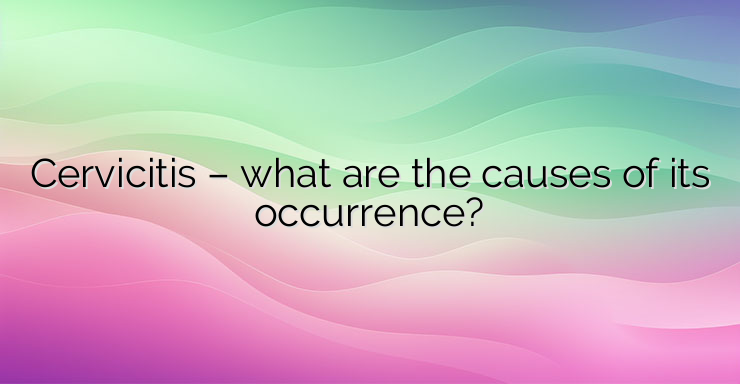Cervicitis is an inflammation of the cervix. It often causes no symptoms, but if they do, they may include an unusual vaginal discharge, painful intercourse, or vulvar or vaginal irritation. Antibiotics successfully treat cervicitis in most cases. In other cases, laser therapy or surgery may be necessary. The condition is often accompanied by vaginal discharge, bleeding or pain during sex, although some women may have no symptoms. Cervicitis can be acute (which is usually caused by an infection) or chronic cervicitis (which is usually caused by chronic irritation). Women who have multiple partners or engage in high-risk sexual behavior are at higher risk of cervicitis. Those with a history of sexually transmitted diseases and infections or who have partners with a history of sexually transmitted diseases are also more likely to develop cervicitis. But sexual practices are not the only cause of cervicitis. The condition can also be caused by irritation from intimate gels, tampons or diaphragms. Cervicitis is very common. It is estimated that more than half of all adult women will have cervicitis at some point in their lives. The only sure way to know if you have cervicitis is a gynecological examination. Symptoms of cervicitis that every woman should watch out for include: Abnormal vaginal discharge that may be yellowish, white, or gray and have a foul odor; Unexpected light vaginal bleeding; Painful intercourse; Vulvar or vaginal irritation. It is especially important to seek medical help if any of the above symptoms are noticed or if the patient has suffered from a sexually transmitted disease in the past. It should also be noted that some women do not show symptoms of inflammation. Therefore, regular gynecological examinations are essential in order to rule out some abnormalities and disease processes. What is the main cause of cervicitis? Infection is the main reason for the development of acute cervicitis. Infections can occur when bacteria enter the uterus. Common causes of infectious cervicitis include: Chlamydia – it is estimated that about 40% of cases of cervicitis are associated with chlamydia infection; Gonorrhea; Genital herpes; Trichomoniasis. Causes of noninfectious cervicitis include exposure to chemicals or mechanical irritation. Such triggers can be: Chemical irritation from spermicides or douches or latex used in condoms; Reaction to inserted diaphragms, cervical caps, tampons or pessaries; Radiation therapy or systemic inflammatory diseases. Treatment for cervicitis usually involves antibiotics to eliminate any bacterial infections that may be causing the condition. Women under the age of 25 or those with high-risk sexual behavior may be treated with antibiotics even if no bacteria are found. Some bacteria can be difficult to detect, but may still be present.It can take up to two weeks for cervicitis to go away. Antibiotics should be taken exactly as prescribed to make sure the infection is completely gone. Antibiotic therapy successfully treats cervicitis in most cases. References: 1. Wilson JF. In the clinic. Vaginitis and cervicitis. Ann Intern Med. 2009 Sep 01;151(5):ITC3-1-ITC3-15; Quiz ITC3-16. [PubMed] 2. Workowski KA, Bolan GA., Centers for Disease Control and Prevention. Sexually transmitted diseases treatment guidelines, 2015. MMWR Recomm Rep. 2015 Jun 05;64(RR-03):1-137.


Leave a Reply